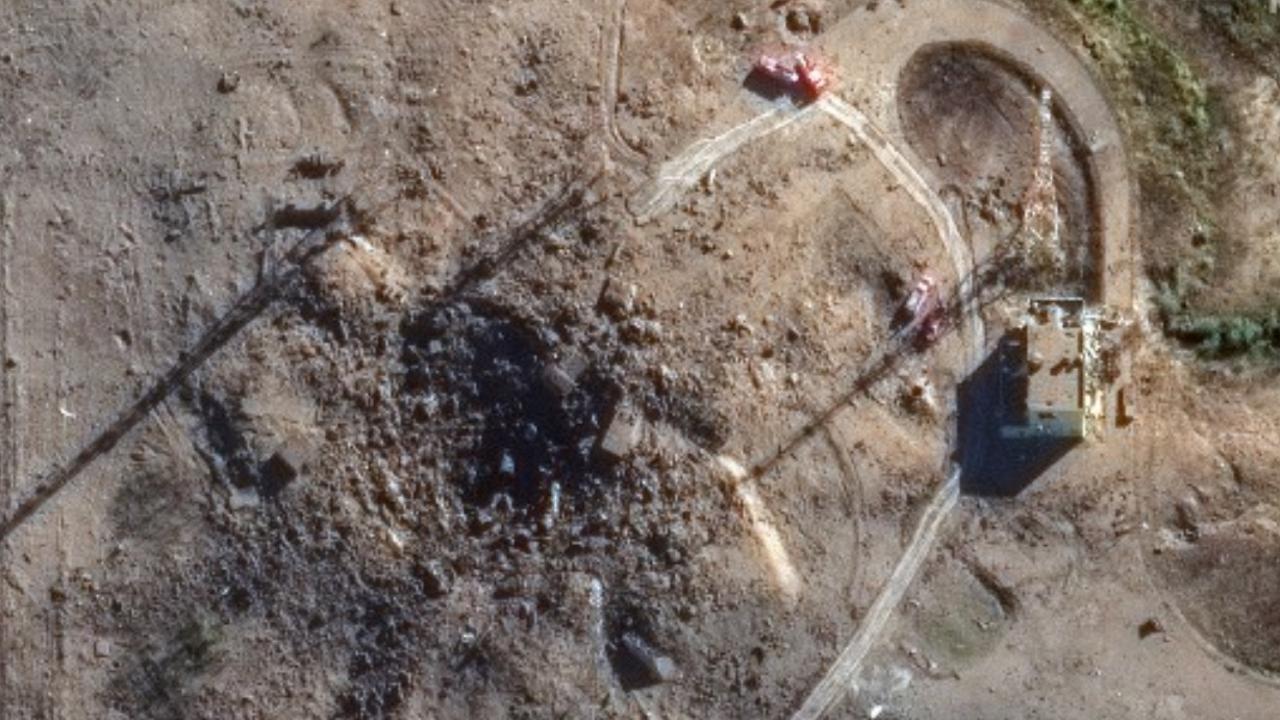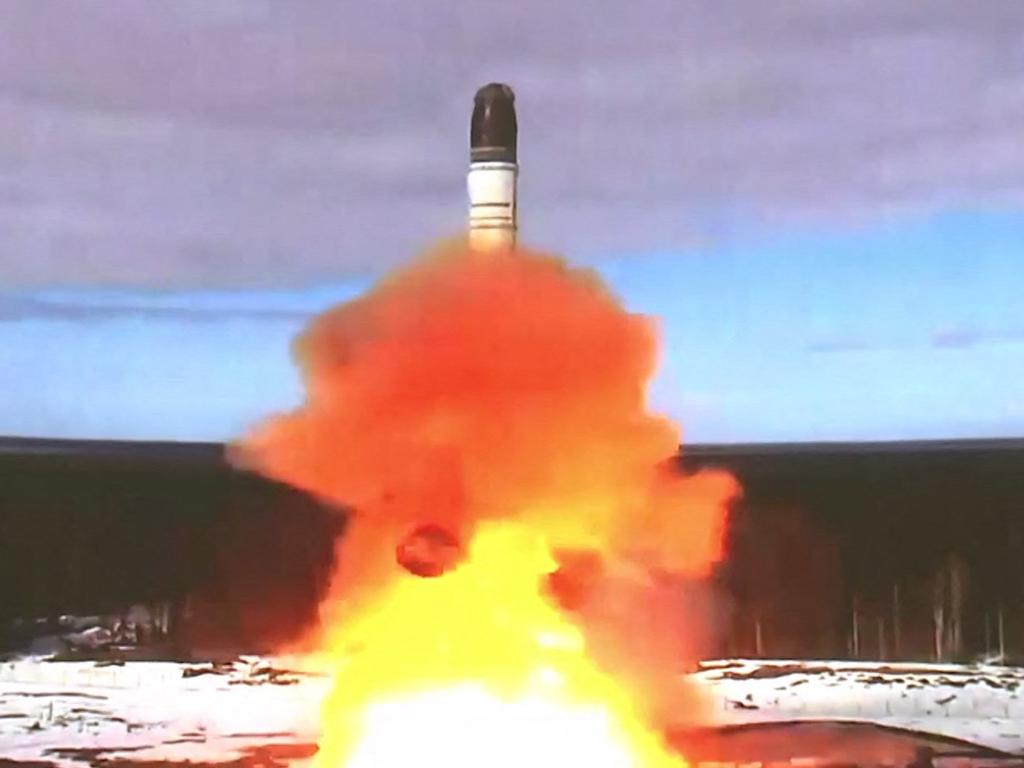‘Satan-2’ missile explodes, obliterates launchpad in botched Russian test
A terrifying mishap involving the ominously named “Satan-2” missile has completely obliterated its surroundings in a botched test in Russia.
A Russian missile once heralded as the “world’s deadliest weapon” failed to launch for the fourth time on Saturday, exploding during refuelling at the Plesetsk Cosmodrome, around 800km north of Moscow.
The nuclear-capable Sarmat RS-28 missile, also known as “Satan-2”, left a crater on the launchpad and caused visible damage to nearby roads and buildings.
Satellite imagery released by Maxar Technologies revealed the scale of the damage, showing flecks of what was once a military site.
“The missile detonated in the silo, leaving a massive crater and destroying the test site,” open-source investigation project MeNMyRC revealed.
The failed launch also triggered a forest fire in the trees surrounding the site and sparked an emergency call to a local fire station.
The Sarmat, a liquid-fuelled missile, is believed to have malfunctioned before the actual launch and obliterated everything within sniffing distance.
The failure comes just a week after Vyacheslav Volodin, a member of Vladimir Putin’s security council, boasted that the Sarmat missile could strike the European Parliament in Strasbourg in under four minutes.
Volodin was responding to a vote in the European Union that recommended Ukraine be allowed to use Western missiles to strike Russia. “The flight time of the Sarmat missile to Strasbourg is three minutes 20 seconds,” Volodin warned.


While the Kremlin has refrained from commenting on the incident, Pavel Podvig, a senior researcher at the United Nations Institute for Disarmament Studies, confirmed the missile’s catastrophic failure shortly after the test site was reduced to rubble.
“Looks like the Sarmat test was not quite successful, to put it mildly. It’s a big crater,” Podvig stated.
The Sarmat program, first unveiled by Putin in 2018, has been heavily promoted as Russia’s core nuclear deterrent, with computer-generated videos showcasing the missile’s ability to deliver catastrophic destruction across the globe within minutes of being launched.
However, despite the Kremlin’s grand promises, the missile had only one successful launch in April 2022.
Intended as a replacement for the smaller original “Satan” missile, the Sarmat has a range of 11,100 miles and can carry up to 16 nuclear warheads.

While Putin has used the missile to reinforce threats of nuclear war if Russia’s “red lines” are crossed, analysts like Carl Bildt, a former Swedish prime minister and co-chairman of the European Council on Foreign Relations, argue that these threats are quickly losing steam almost three years into the Ukraine conflict.
“This is a sign that Russian manufacturing is seriously degrading,” Bildt said.
It comes as Ukrainian President Volodymyr Zelensky boldly claimed war with Russia could end sooner than the world thinks. The brutal stalemate has seen both sides endure devastating casualties for little gain over the past year.
But Zelensky, who continues to push for Western assistance, says the conflict could be nearing its end.
“I think that we are closer to peace than we think,” he told US broadcaster ABC News.
He said Ukraine could eventually push Putin to end the war, but only if Kyiv was coming from a “strong position”.

The Ukrainian president travelled to the US this week to speak at the United Nations General Assembly. He is set to present what he has described as a “victory plan” to his Western allies.
In a statement ahead of the visit, Zelensky said the plan included further weapons donations and diplomatic efforts to force Russia to agree to peace.
He is also pushing for international committees to hold Moscow accountable for its invasion in 2022, which Putin to this day refers to as a “special military campaign”.
Zelensky said his victory plan was not about negotiating with Russia’s oligarchs to construct “a bridge to a diplomatic way out” and “stop the war”.
Kremlin spokesman Dmitry Peskov said Russia was being cautious about recent whispers of a Ukrainian plan, declaring that the conflict would only end when Russia’s aims were achieved.






